Simply great forage - Minimum Spoilage
In order to maintain a high feed value, avoid negative health effects and, therefore, not impair the animals´ performance, it is important to reduce spoilage during storage to a minimum.
The key contributors to spoilage of silage are putrefactive bacteria, yeasts and moulds. They are responsible for changes in colour, smell and consistency of the forage and cause energy and nutrient losses. As infected areas of the forage cannot be fed and may also lead to the loss of an entire forage batch, spoilage always results in forage losses.

Putrefactive bacteria
These bacteria develop under aerobic conditions, when water and air is allowed in. Infested areas are therefore predominantly located under damaged film, and on the silo borders where the film does not seal the silo stock properly. Putrid silage has a greasy, manure-like consistence and musty smell.
Putrefactive bacteria may also cause a deterioration of the entire silage stock. It is especially at risk if it has already been destabilized due to other effects, such as clostridia. Furthermore, it causes high losses of energy and strong protein degradation.
Caution: areas of putrefaction must not be fed to animals.
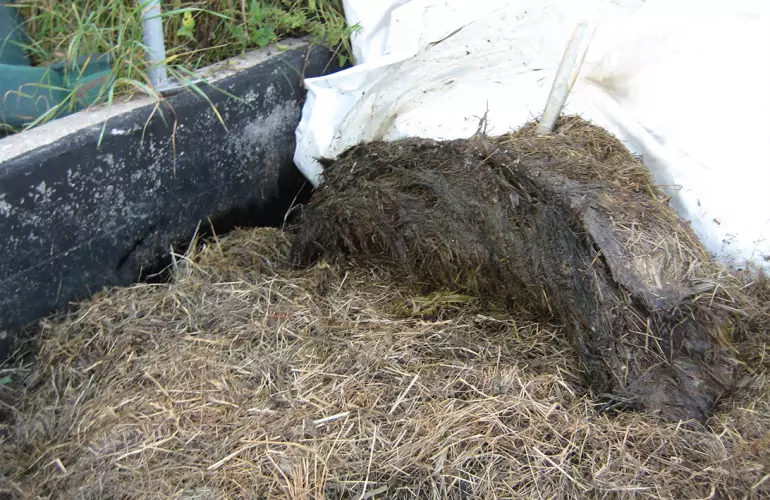
Yeasts
Yeasts develop under aerobic and anaerobic conditions. They are especially risky for the aerobic stability of silages and may cause losses due to heat generation. Without oxygen, yeast ferments sugar to alcohol and proliferates only slightly.
Additionally, yeasts consume all energy-rich substances such as residual sugar, alcohol or lactic acid in the presence of oxygen. The decomposition of these substances to carbon dioxide and water results in a rapid and high temperature increase up to and above 50 °C, leading to high energy losses and possible protein degradation. This process is characterized by the smell of toasted bread and such silages are less palatable for animals. As rises in temperatures also promote mould growth, the risk that the entire batch of silage is spoilt is also increased.
Moulds
Moulds are aerobic organisms, developing only in the presence of air and oxygen. Badly compacted forage layers or air penetration during storage or the feed-out phase promotes these fungi. As they decompose lactic acid, sugar and protein, they are unfavorable for the energy and nutrient content of the silage.
The presence of mycotoxins in fed silage is hazardous to animal health and can result in Diarrhea or abortion. Infected silage must be removed and not be fed to animals.
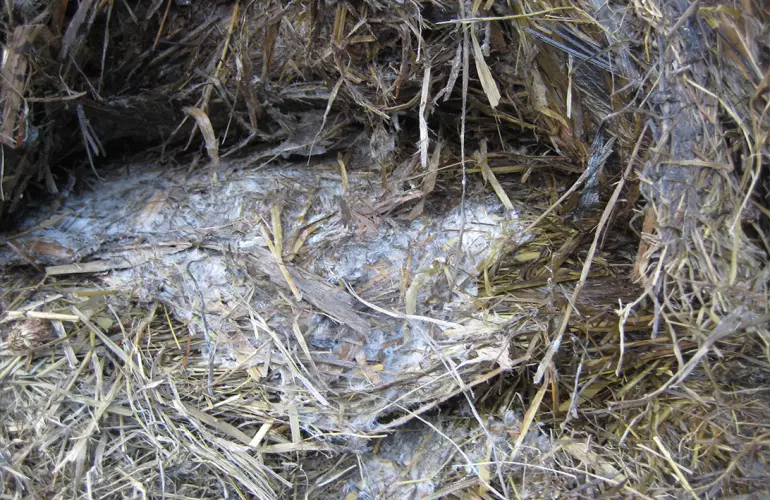
Energy Losses Due to Spoilage
The table below illustrates the impact of spoilage on energy content.
| Energy losses during silage making | ||
|---|---|---|
| Source of floss | Evaluation | Energy losses (%) |
| Respiration after cutting | Unavoidable | 1 - 2 |
| Fermentation (lactic acid) | Unavoidable | ≈ 4 |
| Silage effluent | Process-dependent | 0 - 8 |
| Field losses | Process-dependent | 1 - 5 |
| Faulty fermentation (butyric acid) | Avoidable | 0 - 10 |
| Aerobic transformations (in the silo) | Avoidable | 0 - 10 |
| Reheating (after removal) | Avoidable | 0 - 10 |
* Compensated by concentrates,
** Stocking rate, 1.5 cows/ha
A certain percentage of energy loss is unavoidable – i.e. losses due to respiration after cutting, crumble losses and lactic fermentation. Such losses constitute a minimum of 5-6 % for silage making.
More interestingly, energy losses may increase up to 50 % under certain conditions. This is mainly caused by faulty fermentation and above all by spoilage due to aerobic transformation in the silo, and reheating, after feed has been removed.
Source: Landwirtschaftskammer Niedersachsen 2014
How to achieve?
Spoilage may cause huge energy losses, emphasizing the importance of reducing it to a minimum. But where to start?
Silage Clamps
Effective and regular compaction of the clamp is crucial as air must be removed from the forage. Only under anaerobic conditions can lactic fermentation run off undisturbed, and putrefactive bacteria, yeasts, moulds and reheating can be avoided.
The rolling weight of the compaction vehicles must be adjusted in relation to the harvest chain. With high out-put chains, it may be necessary to use more compaction vehicles on the clamp or even to fill two clamps simultaneously. A guideline for grass silage making limits the harvesting performance per compaction vehicle to 15-20 t DM/hour.*
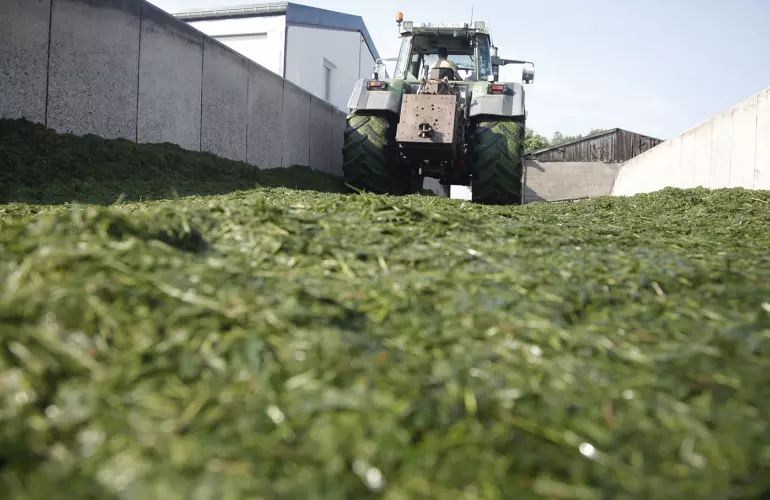
*Source: J. MÜLLER und R. BAUER (2006): Futterkonservierung. In: Pflanzliche Erzeugung. Hrsg.: Rippel, R., R. Brandhuber, P. Capriel et al., BLV Buchverlag, München).
Distribution and rolling are other key points. The forage brought into the clamp should be distributed in layers of maximum thickness 30 cm and compacted with a driving speed of approximately 4-6 kph in order to achieve sufficiently high bulk densities of at least 200 kg DM/m³.*
To avoid air and moisture, it is important to ensure a short harvest without long filling times for the clamp as well as timely and proper coverage of the clamp. Sufficient levelling and inclination of the forage also plays a significant role. This will ensure that rainwater can easily flow off the surface of the clamp.
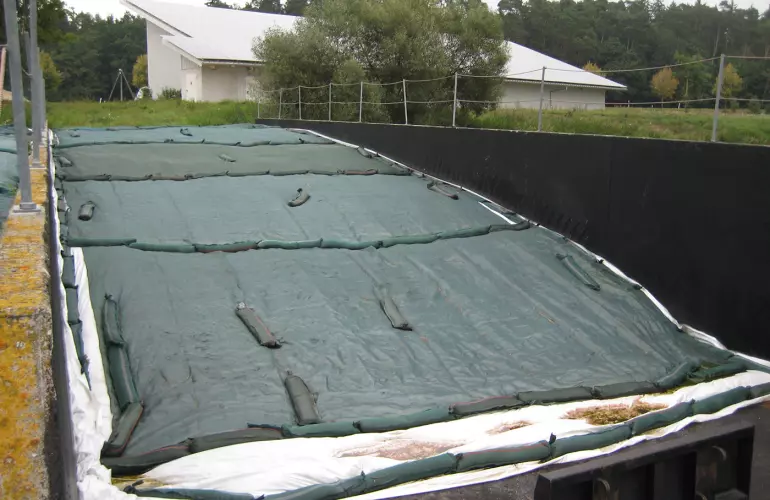
To limit possible air penetration when feeding out, and thus to reduce heat generation, a smooth cut face is required combined with a feed rate of at least 1.5 m per week in the winter and 2.5 m per week in summer.
*Source: J. Galler (2011): „Silagebereitung von A bis Z: Grundlagen – Siliersysteme – Kenngrößen“. Landwirtschaftskammer Salzburg, 1. Auflage.
Baled Silage
In general the same requirements apply for baled silage as for clamped silage.
The most critical factor is to achieve high bale density, however proper wrapping of the bales is also important so as to eliminate presence of oxygen and therefore danger of spoilage.
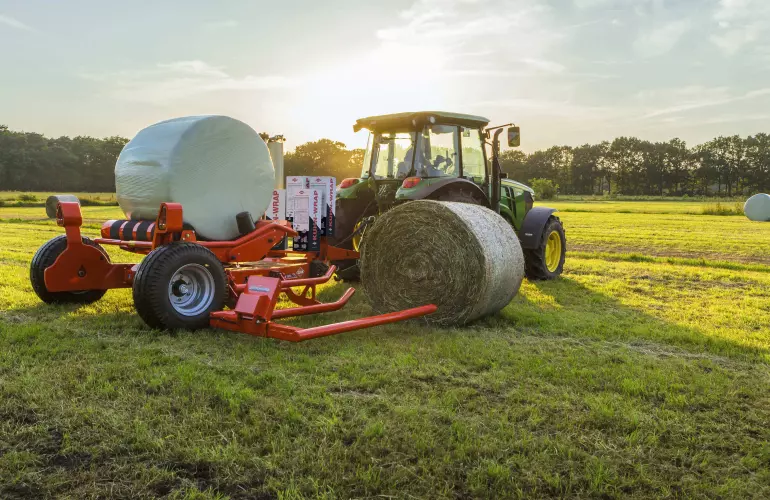
Other News
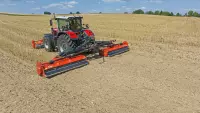
Shredding large areas is no problem!
The BP 8402 PRO is a versatile shredder that works a width of up to 8.40 metres, ideal for users looking for high work output.
Read
Focus on some of the 2025 highlights
2025 was a year of innovation and success. Here are some of the highlights.
Read
More innovations for wine growers, arborists, and landscape maintenance
Read